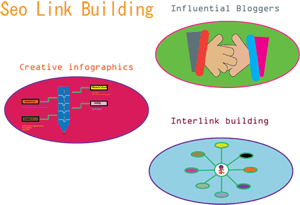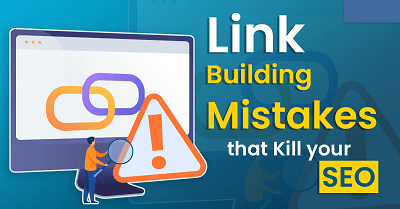Organic traffic & link building for small businesses
Organic traffic and link building are essential components of a successful online presence for small businesses. Organic traffic refers to the visitors who come to your website through unpaid search engine results, while link building involves acquiring high-quality backlinks to your website from other reputable sites. Here’s how small businesses can effectively leverage these strategies:
Organic Traffic:
- Keyword Research: Identify relevant keywords and phrases related to your products or services. Use tools like Google Keyword Planner to find keywords with decent search volume and lower competition.
- On-Page SEO: Optimize your website’s pages for the identified keywords. This includes optimizing meta titles, descriptions, headings, and content to make them relevant and engaging for both users and search engines.
- Quality Content: Regularly create high-quality, informative, and engaging content that addresses the needs and interests of your target audience. This can include blog posts, articles, infographics, videos, and more.
- User Experience (UX): Ensure your website is user-friendly and easy to navigate. A well-designed website with fast loading times and clear navigation enhances user experience and can lead to higher search engine rankings.
- Mobile Optimization: With the increasing use of mobile devices, having a mobile-friendly website is crucial. Google considers mobile-friendliness as a ranking factor.
- Local SEO: If you’re a local business, optimize for local searches. Create a Google My Business listing and ensure your NAP (Name, Address, Phone Number) information is consistent across online directories.
Link Building:
- Content Quality: Develop high-quality content that other websites will want to link to naturally. This could be in the form of educational blog posts, industry reports, infographics, or how-to guides.
- Guest Blogging: Write guest posts for relevant and authoritative websites in your industry. Include a link back to your website within the author’s bio or content, if allowed.
- Outreach: Reach out to bloggers, influencers, and webmasters in your niche. Offer to collaborate on content or projects that can lead to backlinks.
- Broken Link Building: Identify broken links on other websites, and suggest your content as a replacement. This provides value to the website owner and can result in a backlink for you.
- Resource Pages: Find resource pages or lists of helpful websites in your industry. Reach out to the website owners and ask to be included if your content is relevant.
- Social Media: Share your content on social media platforms to increase its visibility and the chances of others linking to it.
- Directories and Local Listings: Submit your business to relevant online directories and local business listings. While these may not always be high-authority backlinks, they can still contribute to your online presence.
Remember that both organic traffic and link building are long-term strategies. Consistency and patience are key. As your website gains authority and backlinks, it’s likely to see improvements in search engine rankings and an increase in relevant organic traffic.

Link Building: Reduce The Risk, Maximize The Reward
Link building is an important part of your website’s search engine optimization (SEO) strategy. It is the process of building internal and external links that point from one website to another. Link building helps search engines to understand the relevance of your website to the keywords you’re targeting, and improve your website’s visibility so that it shows up in the top lists of relevant search queries. The risk of link building is that if done wrong, it can cause your website to be penalized or even blacklisted by Google, reducing any progress you’ve made in your SEO efforts. It is also important to ensure that your links respect the rules of “white hat” link building, which involves avoiding spammy, duplicate, or irrelevant links. It also requires careful selection of quality websites with which you link. In order to reduce the risk and maximize the reward from link building, here are a few tips to ensure your campaigns are effective:
1. Use Quality Link Sources – Make sure the websites you link to are authoritative and of good quality. Links from relevant websites that are trusted by Google will give your domain more authority, as well as give your website trustworthiness and reputation.
2. Follow Best Practices – Ensure your backlinks are created in a way that follows best practices. Avoid high risk tactics such as link harvesting, link buying or link exchanging.

3. Monitor Your Links – Stay on top of your link building efforts by keeping an eye on your backlinks and making sure they are not removed. You can also use link checking tools for detecting low quality or malicious links.
4. Keep it Relevant – When building links back to your website, you should focus on keywords related to the content on the page you are linking to. This will help Google to understand the context of the link and determine how it may affect your page rankings.
5. Varied Link Sources – Don’t just focus on one type of link source, diversify your link building effort by selecting a selection of different anchor texts, link types, and sources.
Once you have established effective link building practices, you will be well on your way to maximizing the reward and reducing the risk of link building. Implementing a consistent link building plan with a focus on high quality, relevant links is the key to a successful SEO campaign. Link building is an incredibly valuable SEO tool and when done correctly can help you maximize the reward and reduce the risk associated with it.
How Can Resellers Create Linkable Assets & Build Better Link
Linkable assets are content assets that can help a reseller to build and improve its links, thus boosting its organic visibility. They are content and marketing pieces that provide value for readers, and through which sites and businesses can link back to the reseller’s website. Linkable assets can include blog posts, whitepapers, research studies, infographics, videos, podcasts, webinars, eBooks, and more. These linkables are designed to be easily shared and promoted across the web encouraging high quality and authoritative links from other websites. There are several types of linkable assets resellers can create and leverage for link building. The first type is content-driven linkable assets. These include blog posts, case studies, whitepapers, webinars, eBooks, guides, and other similar pieces of content. These assets should focus on providing valuable content to readers and should be optimized for search engines. When creating content for linkable assets, it’s important to include relevant keywords that will help the page rank higher in search engines. Additionally, adding relevant hashtags to content can help the content to get discovered by more people. The second type of linkable asset resellers can create is multimedia assets. These include videos, infographics, podcasts, images, animations, slideshows, and other multimedia pieces.

These assets can be embedded on other websites, helping to create more inbound links, as well as increase the visibility of the reseller’s site across social media platforms. Additionally, by including relevant keywords and hashtags, multimedia assets can also increase the visibility of the reseller’s site in search engine results. Resellers can also leverage influencers and guest posts as linkable assets. By collaborating with influencers, resellers can leverage their connections and audience reach to build more links to their sites. Guest blogging on other sites, with links to the reseller’s site, can also help to build backlinks, and drive more traffic to the site. Finally, resellers can create viral content pieces as a linkable asset. Viral content includes creative content that is designed to be shared across social media platforms in an effort to increase the visibility of the reseller’s site. This content should be engaging, creative, and compelling enough that it encourages viewers to share it. By leveraging linkable assets, resellers can not only improve the visibility of their sites in organic search engine results, but also build better relationships with customers and other businesses. Additionally, creating linkable assets can allow resellers to stand out from their competitors, by helping them to create content that is unique and adds value to their readers.
Link juice: Is it the new snake oil of Google SEO
Link juice is a term that is often used in the world of search engine optimization (SEO). It is analogous to the concept of brand equity, linking a website or webpage to another website, webpage or domain on the Internet. When a link is made from one website to another website, the link juice is passed from the source site to the destination site. The concept of link juice is one of the cornerstone concepts of SEO. It is believed that the more link juice a website has, the higher it will rank in search engine results. In practice, link juice is usually related to the concept of PageRank, a value assigned by Google to web pages that it uses to determine their ranking in search engine results. However, there is much debate in the SEO community on the true value of link juice, and many believe that the concept is somewhat of a myth and unsubstantiated by scientific evidence. It can be difficult to measure or quantify the actual benefit of link juice in a meaningful way.

Some argue that the idea of link juice was created to make SEO appear more complicated than it is, and to introduce a mysterious concept that encourages the buying of services or products related to link juice. Furthermore, since Google has a monopoly over search engine rankings, it can be argued that it is Google and not the SEO practitioner who ultimately decides the effectiveness of link juice. In some cases, SEO practitioners may try to use tactics to increase the amount of link juice that a website is able to receive from other websites. These tactics may include link-building campaigns, blog networks, link exchanges, link farms and many others. The efficacy of such tactics tend to remain debatable as there is no steadfast proof that they actually increase rankings. In short, whether or not link juice actually exists is still an open question, and one that is unlikely to be definitively answered anytime soon. It is up to the individual SEO practitioner to weigh up the evidence and decide whether or not link juice is an advertising ploy or a legitimate concept that can genuinely benefit sites.
Links may be less important to the Google Search ranking algorithm in the future
The importance of links in the Google Search ranking algorithm has been greatly diminished in recent years. Historically, links were an important factor in how Google determined the relevance of a web page for a given query. Over the years, Google has evolved its algorithm to rely more heavily on other factors, such as content quality and user experience. As a result, links are becoming less important in the Google Search ranking algorithm. One of the primary reasons for the decline in the importance of links is the rise of artificial intelligence (AI) and machine learning (ML). These technologies enable Google to better understand the content on web pages and the intent of users who search for a given query. As Google has become better at understanding content and user intent, its algorithms have become better at ranking web pages without relying heavily on links. This has resulted in a decreased reliance on links in the Google Search ranking algorithm. Another factor that has contributed to the decreased importance of links in the Google Search ranking algorithm is the rise of social media.

Social media has become an important factor in how users find and interact with content on the web. As a result, Google has had to adjust its algorithms to take into account signals from social media, such as likes, shares, and retweets. These signals are more important than links when it comes to ranking web pages in the search results. Finally, Google has been focusing more on user experience in recent years. Google has rolled out a number of initiatives to improve the user experience on the web, such as mobile-first indexing, page speed optimization, and secure browsing. As a result, Google has shifted its focus away from links and towards other factors that contribute to a better user experience. In the future, links are likely to become even less important in the Google Search ranking algorithm. As Google continues to focus on factors like content quality, user experience, and social media signals, links will become less and less important in the algorithm. As a result, webmasters and SEOs should focus on creating content that is engaging and relevant to their target audience and optimizing their pages for a better user experience.
How to create catchy, effective subject lines for link outreach
Creating catchy, effective subject lines for link outreach is essential for successful campaigns. A good subject line should capture the attention of the recipient, convey the purpose of the message, and encourage them to open and read the email. When crafting a subject line, it is important to make it as relevant and specific as possible. This will help to ensure that the recipient is more likely to open the email and read the content. The subject line should clearly explain what the email is about, so that the recipient knows whether or not it is something they are interested in. It should be concise and to the point, but should also be creative enough to stand out from the crowd. In addition to being specific, the subject line should also be eye-catching. This can be accomplished by using keywords or phrases that are relevant to the topic, as well as by using creative language that will grab the recipient’s attention.

It is also important to use action-oriented words that will motivate the reader to take action. It is also important to personalize the subject line. This can be done by using the recipient’s name or by mentioning something that is relevant to them. This will help to make the email more personal and give the recipient a reason to open and read it. Finally, it is important to test different subject lines to determine which ones are most effective. Testing subject lines can be done by sending the email to a small test group and tracking the open rate. The subject lines that have the highest open rates are the ones that should be used for the link outreach campaign. In conclusion, creating catchy, effective subject lines for link outreach is an essential part of any successful campaign. By making the subject line specific, eye-catching, personalized, and tested, it is possible to create a subject line that will capture the attention of the recipient and encourage them to open and read the email.
Getting it done: how to overcome common link building blockers
Link building is an important part of any successful SEO strategy. It helps to improve website rankings, drives traffic, and increases brand awareness. However, it can be difficult to execute, and many SEOs face common blockers that prevent them from achieving their link building goals. The first common blocker is a lack of resources. Link building requires a significant amount of time and effort, which can become a barrier for those who are already stretched too thin. To overcome this, it is important to prioritize link building and allocate more resources to it. This could include hiring an external agency, outsourcing specific tasks, or investing in the right tools and technologies to help streamline the process. The second common blocker is a lack of content. Links are built from high-quality content that is relevant and engaging to your target audience. If you don’t have enough content, it can be difficult to generate enough links. To overcome this, you should focus on creating content that is interesting and shareable, and use it as the foundation for your link building efforts.

The third common blocker is a lack of relationships. Link building requires a lot of outreach, and it’s important to maintain relationships with potential linkers. Without these relationships, it can be difficult to secure links. To overcome this, you should focus on building relationships with influencers, bloggers, and other industry leaders. You can also use social media to make valuable connections. Finally, the fourth common blocker is a lack of creativity. Link building requires an inventive approach in order to be successful. Without creative strategies, it can be difficult to stand out from the competition. To overcome this, you should focus on creating innovative link building campaigns and strategies. This could include things like guest blogging, infographics, and clever outreach techniques. By addressing these common blockers, you can improve your link building efforts and reach your goals. With the right resources, content, relationships, and creativity, you can build strong links that drive results.
Fake news! How to recognize bad advice in link building and SEO
Fake news is a serious problem in today’s digital world, especially when it comes to link building and SEO. In the world of online marketing, fake news can be very damaging and lead to lost opportunities, wasted time, and even financial losses.
Link building and SEO are complicated topics, so it can be hard to know what advice is good and what is not. To help you recognize bad advice in link building and SEO, here are some tips:
1. Look for advice from reputable sources. A reputable source of information will have a track record of providing accurate and up-to-date information. If the advice is coming from a source that is not well-known or has a questionable reputation, it is best to take it with a grain of salt.
2. Check the source’s credentials. Before taking someone’s advice, make sure they are qualified to give it. If they are not a professional in the field, they may not be able to provide accurate information.

3. Consider the source’s motivations. Sometimes, people may be giving advice that is not in your best interest. Be wary of sources who may be pushing their own agenda or promoting their own products or services.
4. Look for red flags. If the advice seems too good to be true, it probably is. Be wary of advice that promises quick, easy results with no effort required.
5. Check for accuracy. Before taking someone’s advice, make sure to double-check it yourself. Research the topic and see if the advice matches up with what other experts have said.
By following these tips, you can help ensure that you are not taking bad advice when it comes to link building and SEO. It is important to be informed and take the time to do your own research before implementing any strategies. That way, you can be sure that you are taking advice from reputable sources and following the best practices for link building and SEO.
Internal links: Link building’s secret sauce
Internal link building is an important part of SEO, as it helps to improve the visibility of websites in search engines. Internal link building is the practice of strategically placing links between pages of a website with the goal of improving the website’s internal structure, helping users find more content, and increasing the website’s visibility in the SERPs. The main advantage of internal link building is the ease of implementation and the low cost associated with it. Internal link building requires very little effort, as the links are already on the website. All that is necessary is to optimize the links and to ensure that they are pointing to the correct pages. Internal link building is the secret sauce that helps to build the overall strength and authority of a website. By linking to other pages on the website, search engines can better understand the website’s structure and the relationship between pages. This can help to improve the website’s rankings in the SERPs.

Internal link building also helps to improve user experience by making it easier for users to navigate the website and find more information. By providing internal links, users can quickly find more information on the website, which can help to keep them engaged and on the website longer. This can help to improve the website’s overall conversion rate. Another important benefit of internal link building is that it helps to spread link equity across the website. When a page links to another page on the website, the link equity is spread to that page as well. This means that all pages on the website will benefit from the link equity and will become more visible in the SERPs. In summary, internal link building is an important part of SEO, as it helps to improve the website’s visibility in the SERPs, helps to improve user experience, and helps to spread link equity across the website. By leveraging the power of internal link building, websites can improve their rankings in the SERPs and increase the amount of traffic they receive.
Why Having a Foolproof Link Building Strategy is Essential for Emerging Businesses
Link building is the process of creating backlinks from other websites to your own. Backlinks are links that point from one website to another and are often used by search engines to determine how relevant and trustworthy a website is. They help to improve a website’s visibility and search engine rankings. Having a foolproof link building strategy is essential for emerging businesses as it can help them to gain visibility and build trust in the eyes of potential customers. Link building is a crucial part of any SEO strategy. It helps to increase the number of high-quality links pointing to a website, which in turn can help to improve its search engine rankings. Link building can also provide websites with additional referral traffic, as visitors following the link from another website may be more likely to convert, making it an invaluable tool for growing businesses. When creating a link building strategy, it is important to focus on quality over quantity. Having a few high-quality links from reputable websites is much more beneficial than having a high number of links from low-quality websites. It is also important to ensure that the links are relevant to the website and its content.

This is because search engines are more likely to reward websites that have a good balance of relevant and high-quality links. It is also important to ensure that links are added to the website in a natural way. This means that links should not be placed on websites that appear to be buying or selling them, as this can be seen as link manipulation and can result in the website being penalized by search engines. Finally, when creating a link building strategy, it is important to diversify the types of links that are created. This means creating links from a variety of sources, such as blog posts, guest posts, directories, and social media profiles. This will help to ensure that the website is well-rounded and has links from multiple sources, which can help to improve its visibility and search engine rankings. Overall, having a foolproof link building strategy is essential for emerging businesses. It can help them to gain visibility and build trust in the eyes of potential customers. When creating a link building strategy, it is important to focus on quality links, ensure that they are added to the website in a natural way, and diversify the types of links that are created. Doing this can help to improve a website’s visibility and search engine rankings, which can be invaluable for growing businesses.




